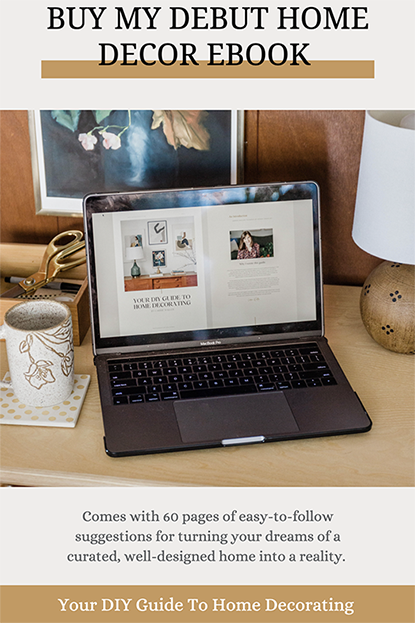.jpg)
One of the most validating things I’ve experienced as a homemaker is witnessing my houseplants grow out of control. The potted plants situated throughout our house are absolute key pieces within the décor “landscape” I’ve created (a room is never really finished until I include a plant, after all!), and whenever I see that one has grown too large for the space its in, I feel like I’ve done something right. It’s one of my favorite feelings, but it does, of course, come with some necessary homework.
.jpg)
.jpg)
.jpg)
Take the overgrown Bird of Paradise plant in our sunroom as an example. My five-year-old plant had outgrown its pot (click here and scroll to about the middle of the post to see how tiny the plant was when I first got her!). The old pot I had her in was about half the size of the new one you see pictured here in today’s post, and she has doubled in size over the course of the last few years. Some of the branches had buckled under their own weight and were in desperate need of added support. I forgot to take “before” photos for today’s story (shame on me!), but you can click over to my Instagram to watch a video I put together documenting this process, including shots of the plant as it looked in its old too-small floor pot, plus you’ll be able to see close-ups of her broken, bent stems and leaves.
.jpg)
The first step in this makeover process was to replant the Bird of Paradise. I nestled her into a larger pot (similar option found here) that we happened to have in storage in the basement, which is about twice the size of the old ceramic pot. This plus the addition of extra potting mix will give our Bird lots more room to grow and stretch out her roots.
I couldn’t just swap her pot out, though. The leaves and stems needed much more support and added strength from up above, and for that I turned to my tried and true method of training the branches with floral tape, clear fishing line, and cup hooks. I’ve talking about this process before in terms of how we support the branches of our beloved Fiddle Leaf Fig tree, and the same principles apply here for our Bird of Paradise.
.jpg) First, I screwed a small cup hook into the wall using a wall anchor for extra strength. Then, I tied small lengths of green floral tape around a few of the droopier branches of the plant. Finally, I looped discrete clear fishing line through the floral tape loops and hooked those around the cup hook to drag the branches to a more upright position.
First, I screwed a small cup hook into the wall using a wall anchor for extra strength. Then, I tied small lengths of green floral tape around a few of the droopier branches of the plant. Finally, I looped discrete clear fishing line through the floral tape loops and hooked those around the cup hook to drag the branches to a more upright position.
The reason you need to combine the floral tape with the fishing line instead of just using fishing line alone is because the fishing line by itself would cut into the delicate flesh of the stems. The soft, thick floral tape offers gentle support, even when held taut against the branches. I also incorporated a couple of green-colored gardening stakes to help support the branches and to balance out the pressure of the floral tape against the stems.
.jpg)
.jpg)
I’ve been repeating this method over and over for years with our plants as they slowly outgrow their old pots, and it has worked like a charm. The branches are able to grow without stress, and I’m able to help guide them into a shape that better suits the specific confines of the corners in our home. Click back here for even more information about my training method, and make sure you hop over to Instagram if you’d like to see this method in video form. It might make a little more sense to see it come together in action.
And since I know some of you will ask how we managed to get our Bird of Paradise to grow this large over the years, I’ll give you a rapid fire list of what has worked for us: I soak the soil once every other week with water (sometimes weekly if the soil feels a little dry), I keep it in a spot that gets really nice morning-to-early-afternoon sunshine, and I wipe the leaves down quarterly with a damp rag to keep dust and pests away. Feel free to leave your own plant care tips in the comments if you have them!
.jpg)
*I earn a small percentage from purchases made using the affiliate links above. Affiliate links are not sponsored. Rest assured that I never recommend products we wouldn’t use or don’t already love ourselves.

.png)
.jpg)
.jpg)
.jpg)
.jpg)
.jpg)
.jpg)
.jpg)
.jpg)
.jpg)



